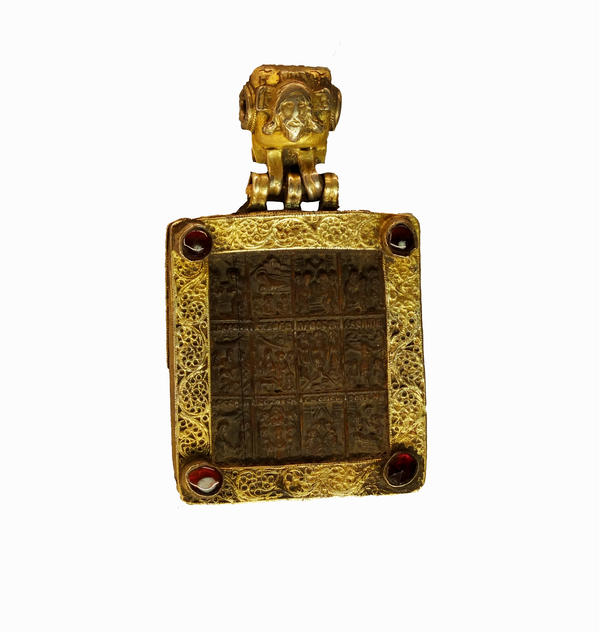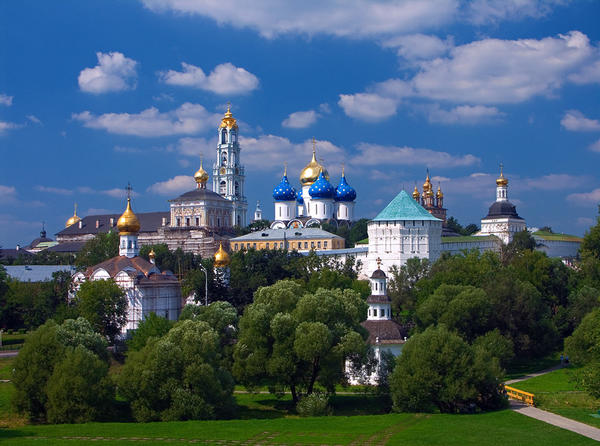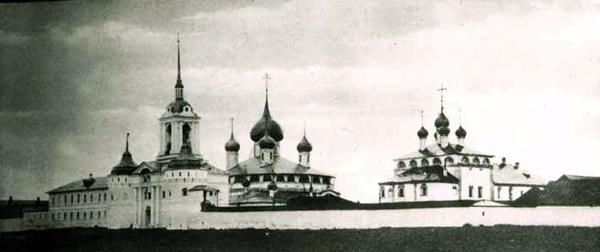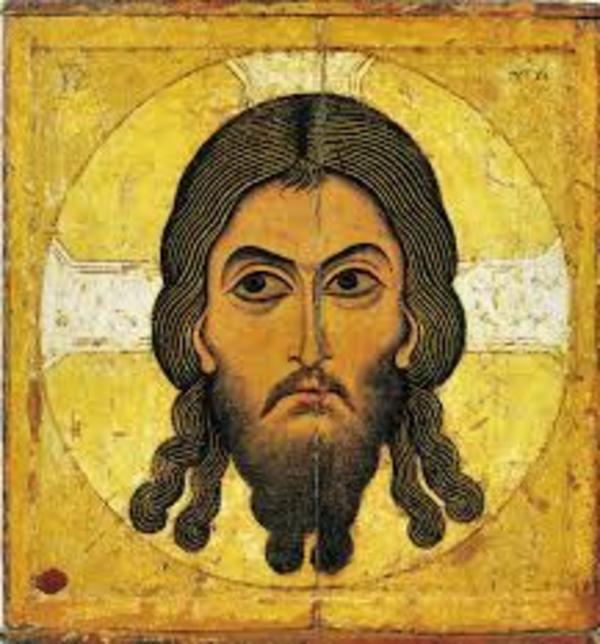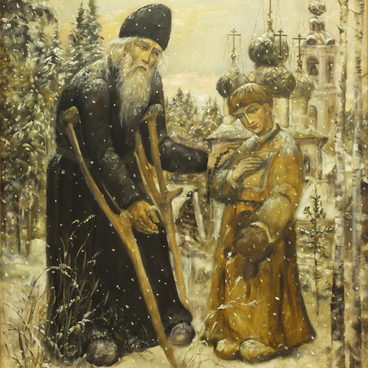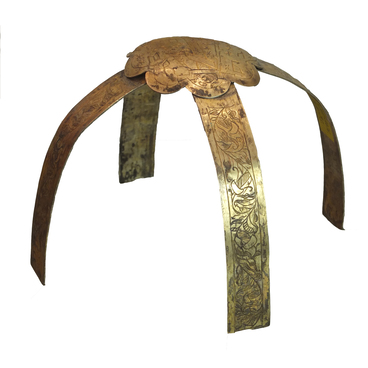According to one of the versions undergarment icons became widespread in early Christian time when believers were persecuted so they had to conceal the images of the Divine personalities in a way that allowed them to have access to these items any time they wanted. There are however some alternative views stating that it was the Byzantine nobility that first began to wear pectoral icons. According to a legend, princess Olga was the first in Russia to wear the icon image. Later on she handed it over to her grandson Vladimir Svyatoslavitch who carried through the 988 religious reforms commonly called Christianizing of Rus.
The pectoral icon from the Uglitch Gallery of Contemporary Orthodox Art was created in the 80s of the 15th century. Carved on a cypress tree which is painted on the obverse of the icon, there are scenes devoted to certain events from the Twelve Great Feasts — the key annual religious holidays after Easter. All the images are applied on separate spaces — stamps — and split into three horizontal registers. On the flip side of the icon ‘The Old Testament Trinity’ is carved out representing the God visitation in the image of three men in front of the first biblical patriarch Abraham.
The pectoral icon from the Uglitch Gallery of Contemporary Orthodox Art was created in the 80s of the 15th century. Carved on a cypress tree which is painted on the obverse of the icon, there are scenes devoted to certain events from the Twelve Great Feasts — the key annual religious holidays after Easter. All the images are applied on separate spaces — stamps — and split into three horizontal registers. On the flip side of the icon ‘The Old Testament Trinity’ is carved out representing the God visitation in the image of three men in front of the first biblical patriarch Abraham.

